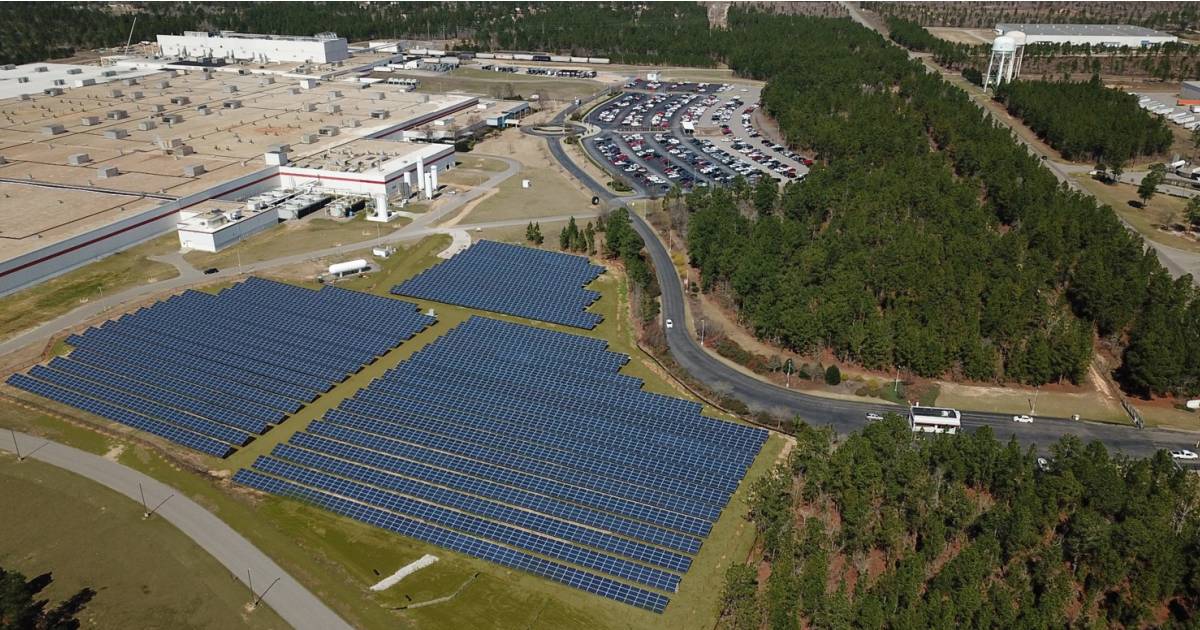
Bridgestone Americas has announced production of demonstration tyres for EV SUVs and crossovers made with 75% recycled and renewable materials – and solar power also plays a role.
Tyre production is a resource and energy intensive business, not to mention the waste involved. In the USA alone, hundreds of millions of tyres are discarded each year. While a significant proportion are reused for retread tyre and other applications1, there’s a lot of room for improvement.
Bridgestone’s demonstration tyres incorporate a variety of materials sourced from recycled and biobased feedstocks including:
- Natural rubber derived from hevea and guayule
- Plant based oils and resins
- Recycled steel
- Sustainable synthetic rubber
- Carbon black from plant based oil and end-of-life tyre pyrolysis oil
- Recycled rubber chemicals
This demonstration tyre is part of Bridgestone’s commitment to utilizing 100% sustainable materials in its products by 2050. The tyres were designed and engineered at Bridgestone’s Americas Technology Center in Akron, Ohio, and manufactured at the company’s Aiken County Passenger/Light Truck Radial Tire Plant in Graniteville, South Carolina.
The use of natural rubber for a street tyre derived from the guayule desert shrub is claimed to be a first. Bridgestone says it has invested over a decade and $100 million into researching and developing guayule (Parthenium argentatum) as an alternative to imported natural rubber from the Hevea Brasiliensis tree.
The company is cultivating the hardy, water-sipping guayule at Bridgestone’s R&D agricultural facility in Eloy, Arizona.
Bridgestone aims to start commercial production of guayule-derived natural rubber by the end of this decade.
“As we progress in our transformation to a sustainable solutions company, we are making incredible progress in the use of recycled and renewable materials to bring sustainable tire technology from the drawing board to the driveway,” said Paolo Ferrari, president & CEO, Bridgestone Americas.
So, where does the solar power aspect figure into this?
Bridgestone’s E8 Commitment
The development of the tyre aligns with Bridgestone’s E8 sustainability commitment, which comprises 8 values starting with “E” – one of which is energy.
On that front, the company plans to be sourcing more than 50% of its electricity from renewable sources this year and is looking to boost that to 100% by 2030.
The Aiken Radial Tire Plant where these demonstration tyres were produced boasts an 8-acre commercial solar array supplying clean electricity for its operations – the proportion of which isn’t clear. Operational since 2021, Bridgestone has previously noted the Aiken PV facility generate “2 megawatts of energy”, which is assumed to mean 2 megawatts of power2.
In February, Bridgestone announced the commencement of solar energy supply under power purchase agreements for two of its tyre plants in Japan – the Shimonoseki Plant and Kitakyushu Plant. This marked the first instance of solar PPAs for Bridgestone’s tyre plants in Japan. The solar power systems involved have a combined capacity of 5.8MW.
Bridgestone has already transitioned to renewable energy for all electricity purchased at Bridgestone EMIA’s locations in Europe, four plants in Japan, and two plants in China.
The company aims to reduce its absolute CO2 emissions (Scope 1 and 2) by 50% by 2030 compared to 2011 levels under its Milestone 2030. Scope 1 covers direct emissions from sources a company owns or controls, while Scope 2 covers indirect emissions from purchased energy.
Footnotes
- One of the applications is Tyre-derived fuel (TDF), which is problematic. ↩
- Learn about the difference between power and energy here. ↩


 RSS - Posts
RSS - Posts



Speak Your Mind